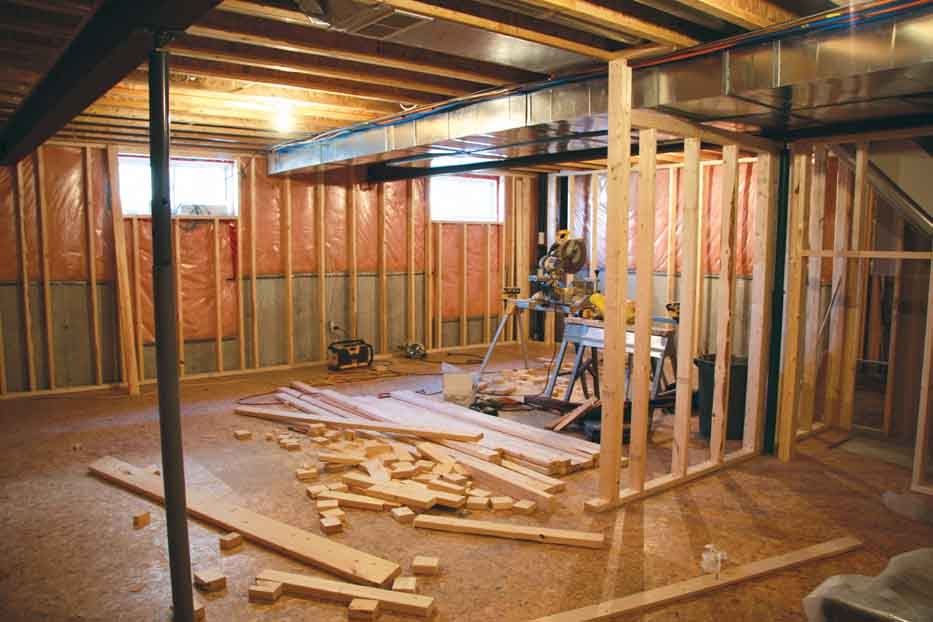
Ask An Engineer: Tips for Home Renovation
Phil Trott knows his way around a renovation site. Before landing his current job as a civil engineer and home inspector for structural upgrades, he worked in construction for several years. He has seen every mistake and has guided all kinds of homeowners, from first timers to house-flipping pros. Before you pick up that sledgehammer, here are his tips for a successful home renovation.
1) Do your research
“If you’re planning a renovation, no matter what size, even if you’re hiring designers and architects and project managers, it’s always good to be educated,” says Trott. For a homeowner, this means understanding your drawings and plans, knowing the right questions to ask, and realizing where your money is going. Trott recommends the City of Ottawa web site as a good place to start. The site has a building and renovating section (http://ottawa.ca/en/residents/homeowners/building-and-renovating) with plenty of helpful features. It lists the different interior building codes and the qualifications you should be looking for in your trades workers. It also has sample plans and checklists to help you stay on track. Trott also suggests checking out trade association web sites like the Canadian Home Builders’ Association, the Canadian Mortgage and Housing Corporation and the Canadian Wood Council for more technical information.
2) Make detailed plans
Before you contact a contractor or a project manager, it’s important to know what you want and where you want it. According to Trott, the best way to do so is to draw your renovation plans out on paper.
“The paper plan is the dry run,” he says. “It sounds obvious, but a lot of people don’t know what should be on drawings.”
Trott recommends making the drawing as detailed as possible by including even the appliance in your plans. Additionally, you can ask friends, family members, and contractors for their input on the plan before you start. It is must easier, and cheaper, to make changes on a paper plan and you can spot potential conflicts before the renovation starts, says Trott.

3) Get several quotes
You have a working plan in place, now it’s time to look for the right construction company to put it into action.
“When comparing, it’s never going to be apples to apples,” says Trott, who stresses the fact that the lowest quote is not necessarily the best. He adds, “Usually, you get what you pay for.”
Trott recommends asking lots of questions and discussing rates for all possible scenarios. Otherwise, companies can set the rate for extra tasks such as finding asbestos in your attic or moving unexpected electrical wiring and you have to pay for it. Additionally, he advises homeowners to specify the type of fixtures and appliances they plan to use as that can also make a big difference on the final numbers.
4) Be flexible
It’s understandable for first-time renovators, especially after weeks of perusing home and interior design magazines, to imagine the exact open-concept stainless steel kitchen of their dreams and desire to recreate nothing less. Trott says it is much better to be flexible.
“A lot of people get set on one thing, and you have to be open-minded,” he says.
Being flexible allows for vital input from your contractor or project manager, who has much more experience and would likely know better about what will work and what won’t for your space.
He adds that a lot of people also convince themselves that a certain design feature will be too complicated or expensive before consulting the experts.
“Ask what it would cost before assuming it’s going to blow the budget,” says Trott. For example, he states that knocking down a load-bearing wall may seem risky, but with the right people for the job, it is definitely possible.
5) Spend your money wisely
“You want to make sure you get the best bang for your buck,” says Trott. These days, with homeowners being more environmentally and financially conscious, renovating to improve your home’s energy efficiency is a popular move. However, before you go replacing your old leaky windows for new energy-efficient ones, be aware of the cheaper options available. Trott suggests adding more insulation to the attic or ceiling as an easy and inexpensive fix to cut down on heat loss. He also recommends reusing materials like hardwood flooring, which can be sanded down and repurposed.
6) Do-it-yourself
While it is still very important to get a professional for the more specialized work, Trott says that despite what a company might tell you, there are many areas of the renovation process that homeowners can do themselves.
“Sometimes contractors don’t want you to get involved,” he says. “But when the quotes come in it can be quite shocking.”
If you’re watching your wallet, Trott proposes doing some of the demolition process yourself with the help of a few friends and some safety equipment.
7) The incremental approach
Coined by Trott himself, this approach is best explained with an example. Say you have a leaky foundation. Before you roll up your sleeves and dig a huge trench around your house for waterproofing, start with the small stuff. Maybe it’s simply a blocked eavestrough or a disconnected downspout, which Trott says could be fixed by simply having water drain further away from the house. Or you could try landscaping your lawn and putting a layer of clay under the topsoil which can also help with drainage.
“Try all of those things first and see if it solves the problem,” says Trott. “It could save a lot of headaches.”
A home renovation is one of the biggest projects most homeowners will ever face. But, if you’re prepared and you follow these tips, you’ll be flipping omelettes in your new kitchen in no time.









